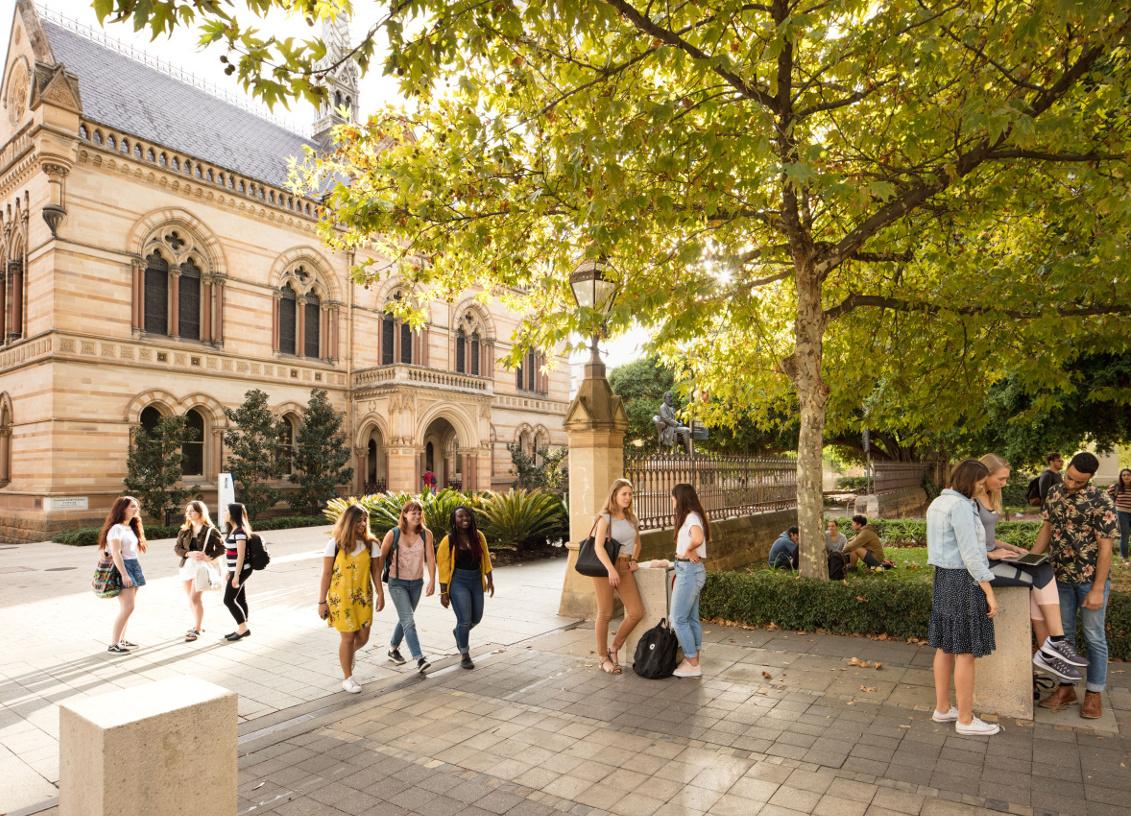ARC funds seven University of Adelaide projects

Seven researchers from the University of Adelaide have received more than $5.7million in funding from the Federal Government
Seven University of Adelaide researchers have collectively been awarded more than $5.7 million from the Federal Government to advance their work in diverse areas including ice shelf disintegration, medical image datasets, organ donation, and the evolution of pest species.
The 2019 Australian Research Council (ARC) Future Fellowships have been awarded to:
Dr Luke Bennetts : Integrating rifts and swell in the mathematics of ice shelf disintegration – School of Mathematical Sciences - $884,063
Antarctic ice-shelf disintegrations have the alarming potential to cause rapid sea level rise, through accelerated discharge of the Antarctic Ice Sheet and initiating runaway Ice Sheet destabilisations. The project aims to develop a mathematical model of swell-induced ice-shelf vibrations in a coupled ocean–shelf 3D framework, focusing on interactions between vibrations and the rift networks that characterise outer shelf margins before disintegration.
Accurate, efficient solutions will be developed by fusing powerful approximation theories, and validated by numerical solutions. The model will be combined with state-of-the-art data to predict trends in Antarctica’s remaining ice shelves and indicate potential future disintegrations.
Prof Gustavo Carneiro : Adapting deep learning for real-world medical image datasets – School of Computer Science - $988,200
The project aims to investigate new deep learning modelling approaches to leverage real-world large-scale image data sets that contain noisy and incomplete labels and imbalanced class prevalence – to enable the use of these data sets for modelling deep learning classifiers. Expected outcomes include an innovative method for modelling deep learning classifiers. The research will involve new inter-disciplinary and international collaborations with machine learning and medical image analysis research institutions. This should provide significant benefits, such as better understanding of deep learning theory, new deep learning applications that can use previously unexplored data sets, and training for the future Australian workforce.
A/Prof Paul Medwell : Resolving the impact of pressure on hot and low-oxygen combustion – School of Mechanical Engineering - $944,000
Despite the important role of renewable energy sources, combustion will remain essential for transportation into the foreseeable future. This project aims to investigate flames burning in a hot and low-oxygen environment. The objective is to better understand how these conditions could be applied to gas turbines. This project expects to generate new knowledge to enable a reduction in emissions, improvement in efficiency and increase in power output. Expected outcomes of this project include improved understanding of the governing physics to enable development of design tools for next-generation engines. This should provide significant benefits, such as reduced reliance on fossil fuels and a critical reduction in greenhouse gas emissions.
Dr Yan Jiao : Develop catalyst materials for future fuels by operando computation – School of Chemical Engineering and Advanced Materials - $728,014
This project aims to design catalyst materials for the production of future fuels (green ammonia, hydrocarbon and alcohol). Using carbon and nitrogen as energy carriers, these fuels are generated from renewable sources such as wind or solar; they are safe, reliable, and possess high energy density. The outcomes include advance in computational electrochemistry to the Operando level, electrocatalysts design principles with clearly articulated reaction mechanisms, and candidate materials for experimental validation. Facilitated by advanced computation techniques and reliable catalyst materials design procedure, this project will address the biggest challenge in future fuel generation, which is the lack of efficient catalyst materials.
Dr Tanya Zivkovic : Critical conversations: An ethnographic study of Australian organ donation – School of Social Sciences - $821,400
There is an urgent need for new culturally sensitive ways of improving organ donation rates in Australia, which are lower in culturally and linguistically diverse groups. The project aims to reorient the research focus from decisions made prior to death to the actual times and clinical spaces in which these decisions occur. Through a comparative cross-cultural analysis this research will provide essential knowledge that will inform innovative approaches to understanding organ donation. The outcomes will have a strong bearing on how organ donation communication, professional protocols, and ultimately, organ donation practice evolve in Australia.
Dr Emma Sherratt : Adaptive morphology and evolution of invasive rabbits and hares – School of Biological Sciences - $681,697
This project aims to uncover the morphological variation that allows rapid adaptive evolution in two invasive species, the rabbit and hare. This project expects to generate new knowledge at the interface between invasion biology and evolutionary biology, using cutting-edge methods to phenotype widespread populations. This project will address key inter-related hypotheses of rapid adaptive evolution at temporal, spatial and phylogenetic scales, particularly about changing morphologies involved role in locomotion and dispersal ability. Expected outcomes of this project include a comprehensive phenotypic database of these two species and identifying how these invasive species are adapting to the Australian landscape.
Dr Cameron Shearer : Light driven degradation of persistent organic pollutants – School of Physical Sciences - $715,772
This project aims to address the accumulation of pollutants in our environment by developing and optimising materials that utilise light energy to breakdown these persistent chemicals. Combining novel techniques and approaches, this project expects to generate new knowledge in the field of materials science and photochemistry.
The anticipated outcomes of this project include an advancement of environmental remediation methods and the capture of pollutants at their source. This should provide significant benefits to both humans and the environment through preventing the adverse impacts of pollutant exposure.
Elisa Black
Manager – News and Media
The University of Adelaide
Mobile: +61 (0)466 460 959
Email: elisa.black@adelaide.edu.au
